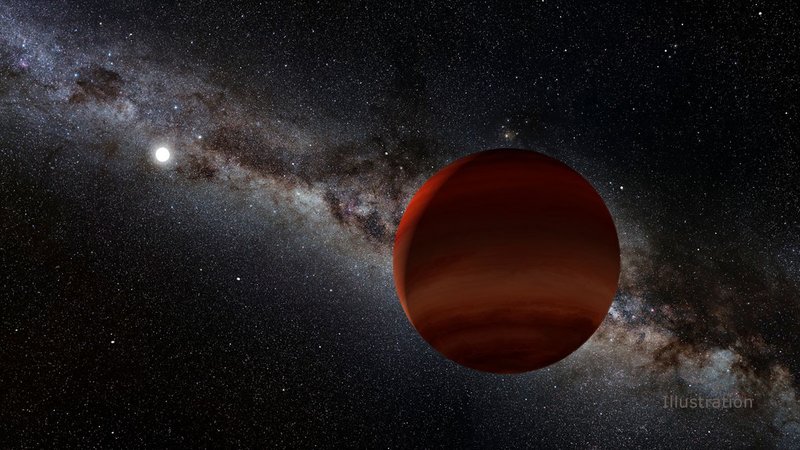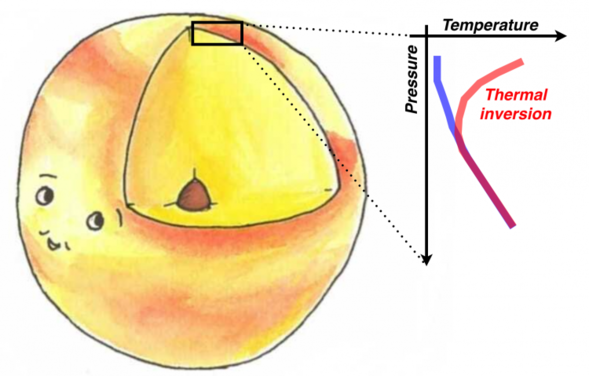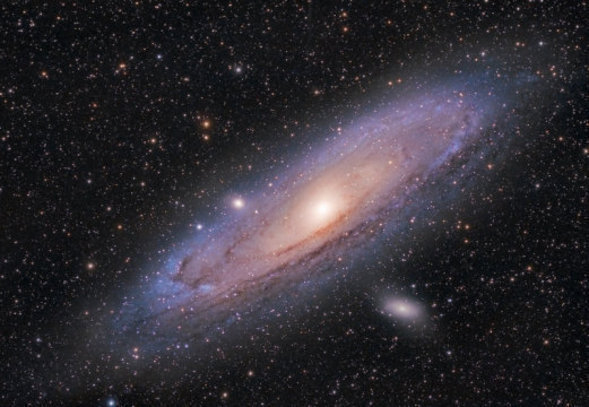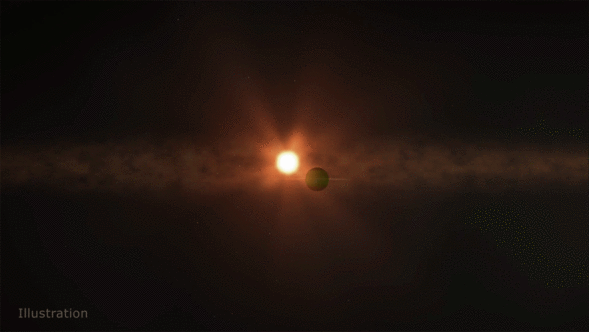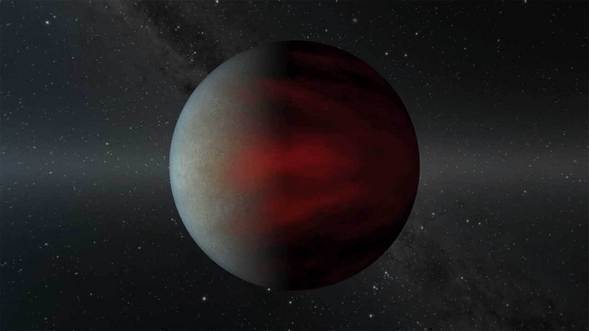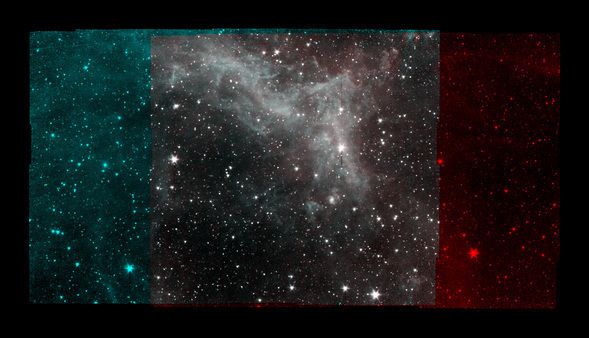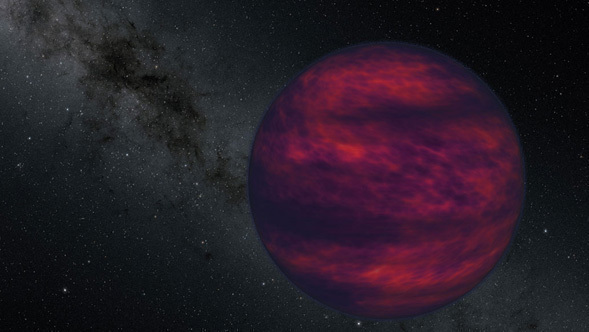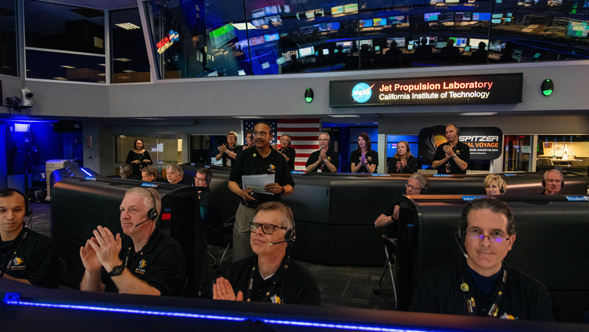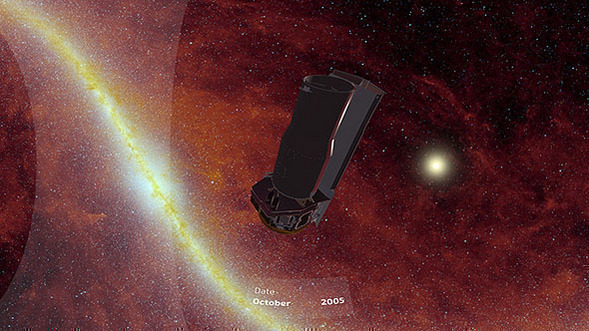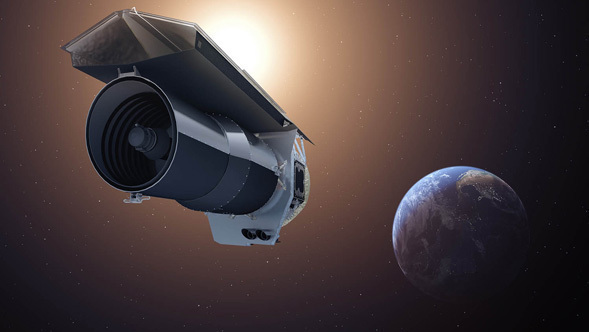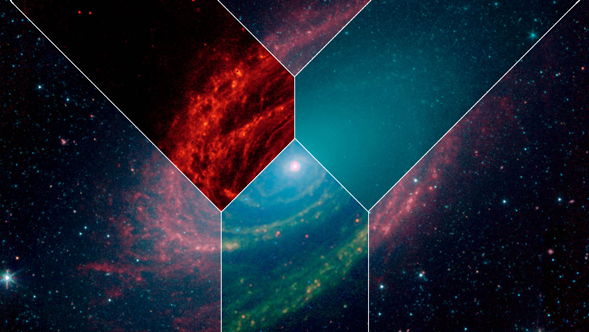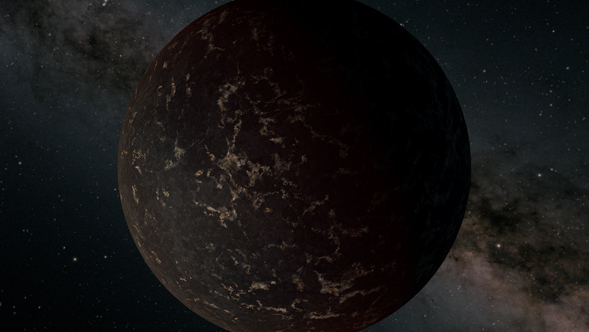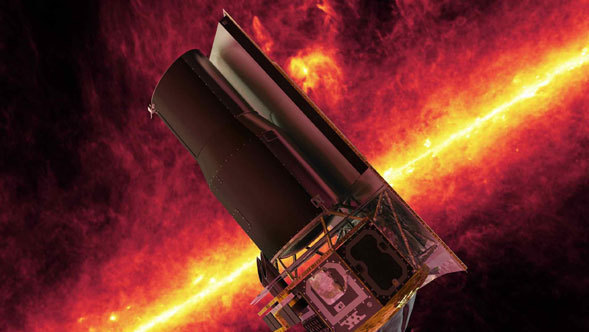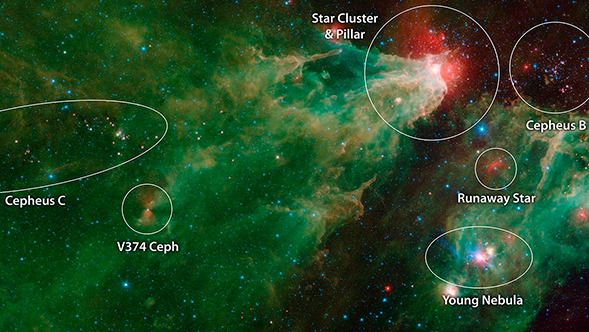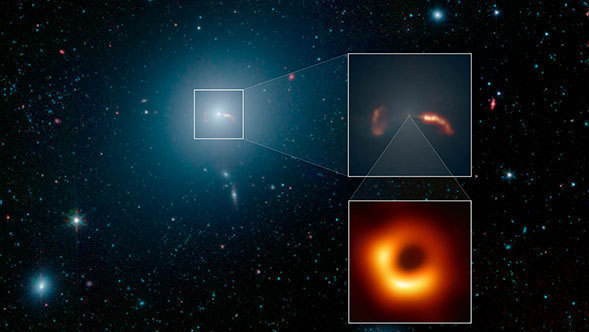Displaying news 31 - 60 of 587 in total
Using a NASA-designed software program, members of the public helped identify a cache of brown dwarfs - sometimes called failed stars - lurking in our cosmic neighborhood.
The thermal structure of hot gas giant exoplanet atmospheres is likely to be inverted for the hottest planets, a class of planets known as ultra-hot Jupiters.
Using known distances of 50 galaxies from Earth to refine calculations in Hubble's constant, astronomers estimates the age of the universe at 12.6 billion years.
The newly discovered planet is orbiting a star still encircled by the disk of material from which both objects formed, giving scientists a glimpse at early planet evolution.
Jupiter-size planets orbiting close to their stars have upended ideas about how giant planets form. Finding young members of this planet class could help answer key questions.
Black holes aren't stationary in space; in fact, they can be quite active in their movements. But because they are completely dark and can't be observed directly, they're not easy to study. Scientists have finally figured out the precise timing of a complicated dance between two enormous black holes, revealing hidden details about the physical characteristics of these mysterious cosmic objects.
Five days before NASA's Spitzer Space Telescope ended its mission on Jan. 30, 2020, scientists used the spacecraft's infrared camera to take multiple images of a region known as the California Nebula — a fitting target considering the mission's management and science operations were both based in Southern California at NASA's Jet Propulsion Laboratory and Caltech.
For the first time, scientists have directly measured wind speed on a brown dwarf, an object larger than Jupiter (the largest planet in our solar system) but not quite massive enough to become a star. To achieve the finding, they used a new method that could also be applied to learn about the atmospheres of gas-dominated planets outside our solar system.
After more than 16 years studying the universe in infrared light, revealing new wonders in our solar system, our galaxy and beyond, NASA's Spitzer Space Telescope's mission has come to an end.
The Tarantula Nebula, seen in this image by the Spitzer Space Telescope, was one of the first targets studied by the infrared observatory after its launch in 2003, and the telescope has revisited it many times since. Now that Spitzer is set to be retired on Jan. 30, 2020, scientists have generated a new view of the nebula from Spitzer data.
A new virtual reality experience lets users get a taste of what it's like to explore the cosmos with the Spitzer Space Telescope, one of NASA's four Great Observatories.
In the scorching atmosphere of exoplanet KELT-9b, even molecules are torn to shreds.
NASA is celebrating the legacy of one of its Great Observatories, the Spitzer Space Telescope, which has studied the universe in infrared light for more than 16 years. The Spitzer mission will come to a close on Jan. 30.
NASA will host a live program at 1 p.m. EST Wednesday, Jan. 22, to celebrate the far-reaching legacy of the agency’s Spitzer Space Telescope – a mission that, after 16 years of amazing discoveries, soon will come to an end.
NASA's Transiting Exoplanet Survey Satellite has discovered its first Earth-size planet in its star's habitable zone, the range of distances where conditions may be just right to allow the presence of liquid water on the surface. Scientists confirmed the find, called TOI 700 d, using NASA's Spitzer Space Telescope and have modeled the planet's potential environments to help inform future observations.
This image from NASA's Spitzer Space Telescope shows the Perseus Molecular Cloud, a massive collection of gas and dust that stretches over 500 light-years across. Home to an abundance of young stars, it has drawn the attention of astronomers for decades. Spitzer's Multiband Imaging Photometer instrument took this image during Spitzer's "cold mission," which ran from the spacecraft's launch in 2003 until 2009, when the space telescope exhausted its supply of liquid helium coolant.
Look closer to see why scientists studying this distant cloud of dust and gas think it resembles a cosmic jack-o'-lantern.
This infrared image from NASA's Spitzer Space Telescope shows a cloud of gas and dust full of bubbles, which are inflated by wind and radiation from young, massive stars. Each bubble is filled with hundreds to thousands of stars, which form from dense clouds of gas and dust.
NASA launched its Spitzer Space Telescope into orbit around the Sun on Aug. 25, 2003. Since then, the observatory has been lifting the veil on the wonders of the cosmos, from our own solar system to faraway galaxies, using infrared light.
A new study using data from NASA's Spitzer Space Telescope provides a rare glimpse of conditions on the surface of a rocky planet orbiting a star beyond the Sun.
It might look like a lightsaber floating in space, but the red beam in the middle of this image is actually a galaxy seen edge-on.
Two NASA space telescopes have teamed up to identify, for the first time, the detailed chemical "fingerprint" of a planet between the sizes of Earth and Neptune. No planets like this can be found in our own solar system, but they are common around other stars.
Unlike Andy Warhol's famous silkscreen grids of repeating images rendered in different colors, the varying hues of this galaxy represent how its appearance changes in different wavelengths of light - from visible light to the infrared light seen by NASA's Spitzer Space Telescope.
After nearly 16 years of exploring the cosmos in infrared light, NASA's Spitzer Space Telescope will be switched off permanently on Jan. 30, 2020. By then, the spacecraft will have operated for more than 11 years beyond its prime mission, thanks to the Spitzer engineering team's ability to address unique challenges as the telescope slips farther and farther from Earth.
The evolution of stellar families - born from the same clumps of gas and dust - is just some of what's on display in this sweeping image.
NASA's Spitzer Space Telescope has revealed that some of the universe's earliest galaxies were brighter than expected. The excess light is a byproduct of the galaxies releasing incredibly high amounts of ionizing radiation. The finding offers clues to the cause of the Epoch of Reionization, a major cosmic event that transformed the universe from being mostly opaque to the brilliant starscape seen today.
On April 10, 2019, the Event Horizon Telescope (EHT) unveiled the first-ever image of a black hole's event horizon, the area beyond which light cannot escape the immense gravity of the black hole. That giant black hole, with a mass of 6.5 billion Suns, is located in the elliptical galaxy Messier 87 (M87). EHT is an international collaboration whose support in the U.S. includes the National Science Foundation.
What looks like a red butterfly in space is in reality a nursery for hundreds of baby stars, revealed in this infrared image from NASA's Spitzer Space Telescope. Officially named Westerhout 40 (W40), the butterfly is a nebula — a giant cloud of gas and dust in space where new stars may form.
Three images from NASA's Spitzer Space Telescope show pairs of galaxies on the cusp of cosmic consolidations. Though the galaxies appear separate now, gravity is pulling them together, and soon they will combine to form new, merged galaxies.
Astronomers, astrophysicists and other space scientists will gather to discuss their latest research at the 233rd meeting of the American Astronomical Society this week (Jan. 6-10) in Seattle. Media can watch via the AAS website as research results featuring data from NASA missions are presented at news conferences throughout the week.
Displaying news 31 - 60 of 587 in total
